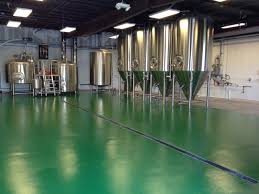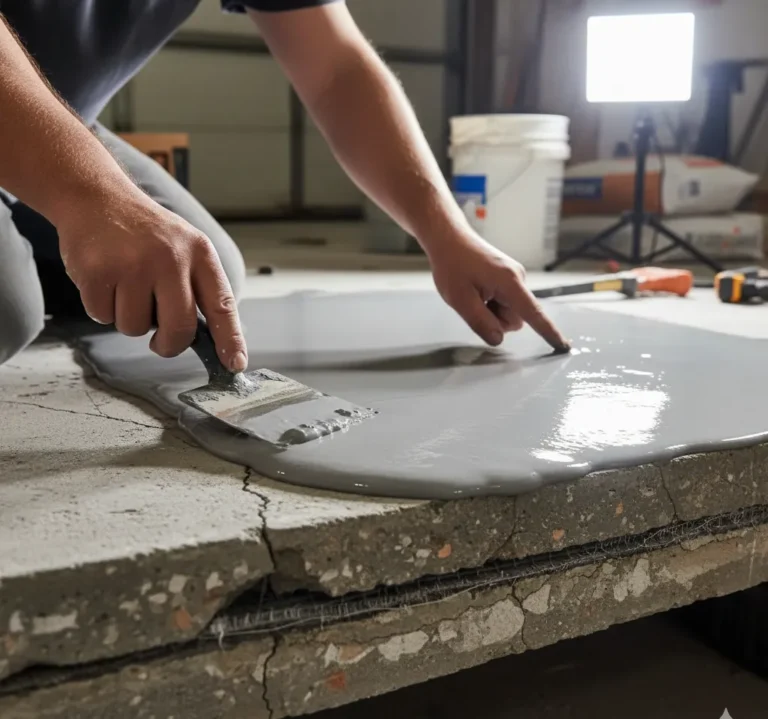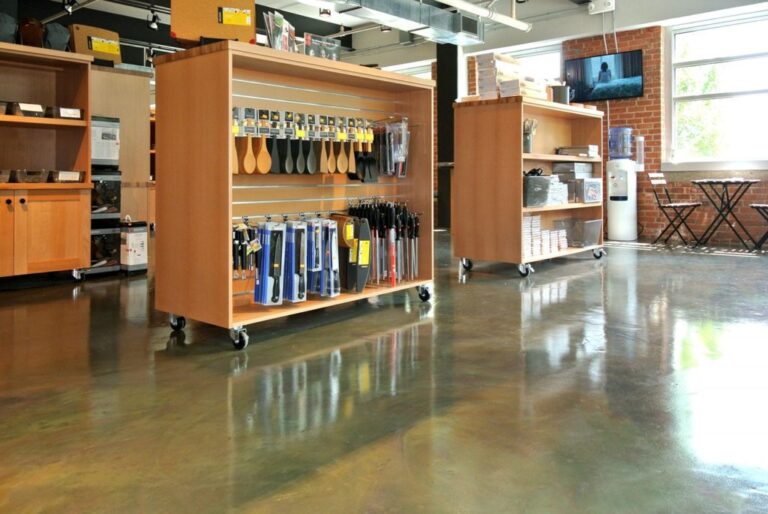What is Microcement?
Microcement is a versatile, thin-layer coating that can be applied to various surfaces, including floors, walls, and furniture. It is composed of cement, water-based resins, additives, and mineral pigments. This combination results in a highly durable and aesthetically pleasing finish that is ideal for both residential and commercial spaces.
- Durability : Microcement is known for its robustness and longevity.
- Versatility : It can be applied to a wide range of surfaces.
- Aesthetic Appeal : Offers a sleek, modern look.
What is Microtopping?
Microtopping, on the other hand, is a polymer-modified cementitious coating that provides a smooth, seamless finish. It is often used to refurbish existing surfaces, giving them a new lease on life without the need for extensive demolition or reconstruction.
- Seamless Finish : Microtopping creates a continuous, joint-free surface.
- Refurbishment : Ideal for updating old surfaces.
- Flexibility : Can be applied over various substrates.
Microcement vs. Microtopping: Defining the Differences
Technical Distinctions Between Microcement and Microtopping
While both microcement and microtopping are used for surface coatings, they have distinct technical differences. Microcement is typically thicker and more robust, making it suitable for high-traffic areas. Microtopping, being thinner, is more flexible and easier to apply over existing surfaces.
| Feature | Microcement | Microtopping |
| Thickness | Thicker, more robust | Thinner, more flexible |
| Application | Suitable for high-traffic | Ideal for refurbishing |
| Durability | Highly durable | Moderately durable |
Aesthetic Variations: Microcement and Microtopping Compared
Aesthetically, microcement offers a more industrial, raw look, while microtopping provides a smoother, more refined finish. The choice between the two often comes down to the desired visual effect and the specific requirements of the project.
- Microcement : Industrial, raw appearance.
- Microtopping : Smooth, refined finish.
The Application Process: Microcement and Microtopping
How to Apply Microcement for Optimal Results
Applying microcement involves several steps to ensure a durable and aesthetically pleasing finish. The process includes surface preparation, primer application, base coat, and finishing layers.
- Surface Preparation : Clean and level the surface.
- Primer Application : Apply a primer to ensure adhesion.
- Base Coat : Apply the first layer of microcement.
- Finishing Layers : Add additional layers for durability and aesthetics.
The Step-by-Step Guide to Microtopping Installation
Microtopping installation is somewhat simpler but still requires careful attention to detail. The process includes surface preparation, primer application, and the application of the microtopping layers.
- Surface Preparation : Clean and repair the existing surface.
- Primer Application : Apply a primer to promote adhesion.
- Microtopping Layers : Apply the microtopping in thin layers.
Advantages of Microcement in Design
The Versatility of Microcement in Modern Architecture
Microcement is incredibly versatile, making it a popular choice in modern architecture. It can be used on floors, walls, and even furniture, offering a cohesive look throughout a space.
- Multi-Surface Application : Suitable for floors, walls, and furniture.
- Cohesive Design : Creates a unified aesthetic.
Microcement’s Role in Creating Continuous Spaces
One of the standout features of microcement is its ability to create continuous, seamless spaces. This is particularly beneficial in open-plan designs, where a consistent look is desired.
- Seamless Finish : No joints or seams.
- Open-Plan Design : Ideal for creating a unified look.
The Unique Benefits of Microtopping 
Microtopping’s Innovative Material Properties
Microtopping is known for its innovative material properties, including its flexibility and ease of application. These properties make it an excellent choice for refurbishing existing surfaces.
- Flexibility : Can be applied over various substrates.
- Ease of Application : Simple installation process.
Achieving Aesthetic Flexibility with Microtopping
Microtopping offers a high degree of aesthetic flexibility, allowing for various finishes and textures. This makes it a versatile option for different design styles.
- Variety of Finishes : Multiple textures and colors available.
- Design Versatility : Suitable for various design styles.
Cost Analysis: Microcement vs. Microtopping
Comparing the Expenses: Microcement and Microtopping
When it comes to cost, both microcement and microtopping have their pros and cons. Microcement tends to be more expensive due to its durability and thicker application. Microtopping, being thinner, is generally more affordable but may require more frequent maintenance.
| Cost Factor | Microcement | Microtopping |
| Initial Cost | Higher | Lower |
| Maintenance | Low | Moderate |
| Longevity | Long-lasting | Moderate lifespan |
Budget Considerations for Your Next Project
When planning your next project, it’s essential to consider both the initial costs and the long-term maintenance expenses. Microcement may have a higher upfront cost but offers long-term savings due to its durability. Microtopping, while more affordable initially, may require more frequent upkeep.
- Initial Investment : Higher for microcement.
- Long-Term Savings : Microcement offers better long-term value.
- Maintenance Costs : Higher for microtopping.
Choosing Between Microcement and Microtopping
Factors to Consider When Selecting Microcement or Microtopping
Several factors should be considered when choosing between microcement and microtopping. These include the specific requirements of the project, the desired aesthetic, and the budget.
- Project Requirements : Consider the specific needs of your project.
- Aesthetic Goals : Choose based on the desired visual effect.
- Budget : Factor in both initial and long-term costs.
Tailoring Your Choice to the Project’s Needs
Ultimately, the choice between microcement and microtopping should be tailored to the specific needs of your project. Whether you prioritize durability, aesthetic flexibility, or budget, both options offer unique benefits.
- Durability : Opt for microcement for high-traffic areas.
- Aesthetic Flexibility : Choose microtopping for a variety of finishes.
- Budget Constraints : Consider the long-term costs.
Practical Applications of Microcement
Microcement in Residential and Commercial Spaces
Microcement is highly versatile and can be used in both residential and commercial spaces. Its durability makes it ideal for high-traffic areas, while its aesthetic appeal enhances the overall design.
- Residential Use : Ideal for kitchens, bathrooms, and living areas.
- Commercial Use : Suitable for retail spaces, offices, and restaurants.
Creative Uses of Microcement in Design
Microcement can be used creatively to enhance various design elements. From feature walls to custom furniture, the possibilities are endless.
- Feature Walls : Create stunning focal points.
- Custom Furniture : Design unique pieces with microcement.
Exploring the World of Microtopping
The Continuous Space of Microtopping: An Overview
Microtopping is known for creating continuous, seamless spaces. This makes it an excellent choice for open-plan designs and areas where a unified look is desired.
- Seamless Finish : No joints or seams.
- Open-Plan Design : Ideal for creating a unified look.
Innovative Uses of Microtopping in Design Projects
Microtopping can be used innovatively in various design projects. Its flexibility allows for a range of finishes and textures, making it suitable for different styles.
- Variety of Finishes : Multiple textures and colors available.
- Design Versatility : Suitable for various design styles.
Concrete and Resin Floors: An Overview 
What Are Concrete Floors?
Concrete floors are made from a mixture of cement, water, and aggregates. They are known for their durability and are commonly used in industrial and commercial settings.
- Durability : Highly robust and long-lasting.
- Industrial Use : Common in warehouses and factories.
What Are Resin Floors?
Resin floors are made from a mixture of synthetic resins and hardeners. They offer a smooth, seamless finish and are often used in environments where hygiene is a priority.
- Seamless Finish : No joints or seams.
- Hygienic : Easy to clean and maintain.
Comparing Concrete and Resin Floors
Differences and Similarities Between Concrete and Resin Floors
While both concrete and resin floors are durable, they have distinct differences. Concrete floors are more robust and suitable for heavy-duty applications, while resin floors offer a smoother, more hygienic finish.
| Feature | Concrete Floors | Resin Floors |
| Durability | Highly robust | Moderately durable |
| Finish | Rough, industrial | Smooth, seamless |
| Hygiene | Moderate | High |
Choosing the Right Flooring Solution for Your Space
When choosing between concrete and resin floors, consider the specific requirements of your space. Concrete floors are ideal for heavy-duty applications, while resin floors are better suited for environments where hygiene is a priority.
- Heavy-Duty Use : Opt for concrete floors.
- Hygienic Environments : Choose resin floors.
Microcement and Microtopping in Detail
The Composition and Characteristics of Microcement
Microcement is composed of cement, water-based resins, additives, and mineral pigments. This combination results in a highly durable and aesthetically pleasing finish.
- Composition : Cement, resins, additives, and pigments.
- Durability : Highly robust and long-lasting.
The Versatility and Adaptability of Microtopping
Microtopping is a polymer-modified cementitious coating that offers a high degree of flexibility. It can be applied over various substrates, making it a versatile option for different design projects.
- Flexibility : Can be applied over various substrates.
- Versatility : Suitable for different design styles.
Maintenance and Care for Microcement and Microtopping Surfaces
Tips for Preserving the Beauty of Microcement Floors
To preserve the beauty of microcement floors, regular cleaning and maintenance are essential. Use a pH-neutral cleaner and avoid abrasive tools to prevent damage.
- Regular Cleaning : Use a pH-neutral cleaner.
- Avoid Abrasives : Prevent scratches and damage.
Best Practices for Maintaining Microtopping Surfaces
Maintaining microtopping surfaces involves regular cleaning and occasional resealing. Use a mild cleaner and avoid harsh chemicals to keep the surface looking its best.
- Regular Cleaning : Use a mild cleaner.
- Occasional Resealing : Maintain the surface’s integrity.
Future Trends: Microcement and Microtopping in Design
The Evolving Role of Microcement and Microtopping in Interior Design
Microcement and microtopping are becoming increasingly popular in interior design due to their versatility and aesthetic appeal. As design trends evolve, these materials are likely to play a more significant role in creating modern, seamless spaces.
- Increasing Popularity : Growing use in modern design.
- Versatile Applications : Suitable for various design styles.
Anticipating the Next Wave of Innovations in Surface Coatings
The future of surface coatings is likely to see further innovations in materials and application techniques. Both microcement and microtopping are expected to evolve, offering even more options for designers and architects. Microcement kitchen surfaces are smooth and modern-looking countertops They are durable and easy to clean making them great for busy kitchens Flooring microcement terrazzo is a smooth and durable floor covering that combines tiny colorful stones with cement It creates a unique speckled look that is both strong and beautiful for homes and buildings
Dubai cultural spaces microcement is a special material used to make floors and walls look smooth in places where people learn about Dubai’s culture It helps create a modern look while still respecting the traditional feel of these important spaces Microcement tiles longevity Microcement tiles can last for many years if they are properly installed and maintained They are durable and resistant to wear making them a long-lasting option for floors and walls
Microcement units transform boutiques by giving stores a sleek modern look The smooth surfaces and custom colors of microcement make shops stand out Sleek microcement surfaces are smooth and modern-looking floors or walls They are made by applying a thin layer of special cement that can be colored to match any style
- Material Innovations : New formulations and finishes.
- Application Techniques : Improved methods for better results.
FAQs: Microcement vs. Microtopping
What Are the Main Differences Between Microcement and Microtopping?
The main differences between microcement and microtopping lie in their thickness and application. Microcement is thicker and more robust, making it suitable for high-traffic areas. Microtopping is thinner and more flexible, ideal for refurbishing existing surfaces.
Can Microtopping Be Applied Over Existing Surfaces?
Yes, microtopping can be applied over existing surfaces. Its flexibility allows it to adhere to various substrates, making it an excellent choice for refurbishing old surfaces.
How Durable Are Microcement and Microtopping Floors?
Microcement floors are highly durable and suitable for high-traffic areas. Microtopping floors are moderately durable and may require more frequent maintenance, especially in high-traffic areas.
What Are the Color Options Available for Microcement and Microtopping?
Both microcement and microtopping offer a wide range of color options. Mineral pigments can be added to achieve various shades and finishes, allowing for a high degree of customization.
How Do Microcement and Microtopping Contribute to Sustainable Design?
Both microcement and microtopping contribute to sustainable design by reducing the need for extensive demolition and reconstruction. Their long-lasting nature also minimizes the need for frequent replacements, reducing waste.





